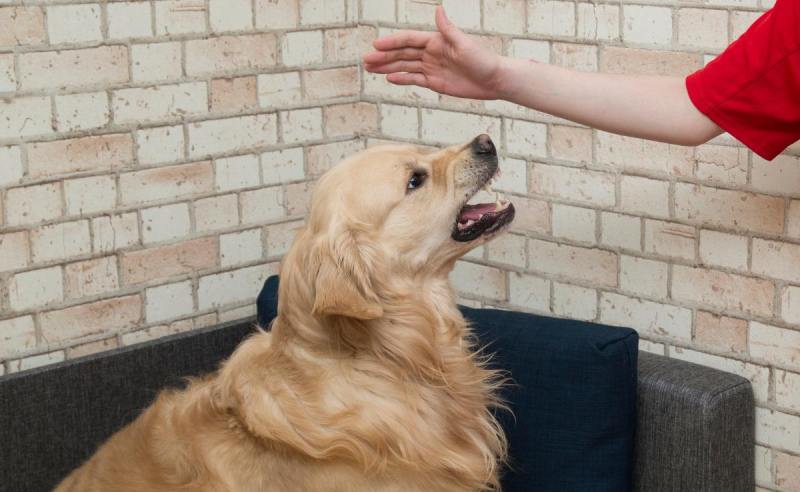Dog Behavior Correction Techniques – Reader is supported. When you make a purchase through links on our site, we may earn an affiliate commission at no cost to you. learn more.
Dogs can be easy to love from the day you get them, but they almost always need work to become easy to live with. Almost every aspect of a dog’s day involves exercise, from his morning walk to his bedtime at night.
Dog Behavior Correction Techniques

Depending on your goals, you may need to use a variety of techniques to shape their behavior, each with different uses, advantages, and disadvantages. Here we explore the differences between core dog training techniques so you can plan the best for your pup.
Dog Behavior: Training A Reactive Adventure Dog
We can divide dog training techniques into different classifications, many of which often overlap. For example, we can define our learning style by how we use operant conditioning, issuing or withdrawing punishments and rewards.
Alternatively, we can look at how we guide our dogs to certain behaviors and behaviors as reinforcement or what tools we use to carry out our lessons. You can try clicker training, where you use a clicker to mark a desired behavior by making an association between the sound of the clicker and receiving a reward.
This is a common dog training technique, but trainers use it in a variety of training approaches, such as shaping or luring. You have several ways to mark a single training approach. However you describe it, you should choose the dog training technique that best suits your goals.
Positive reinforcement training involves adding a reward to reinforce a desired behavior. Trainers also use the terms “force-free”, “humane” or “reward-based” training to refer to positive reinforcement.
Dog Training Techniques: 7 Vet Verified Methods & Their Differences
An example of positive reinforcement is teaching a dog to sit and giving him a treat when he gets into the correct sitting position. You offer a reward to reinforce the behavior, and the dog associates the action with a positive outcome, making it more likely to happen in the future.
Positive reinforcement is the training technique agreed upon by most experts around the world, and virtually all reputable trainers incorporate it into their practices.
By being positive, trainers build trust and foster a strong dog-owner bond. They also put your dog in a better position to follow your direction. At the same time, it makes training more fun, and turns it into a game that promotes focus and motivation.

Research suggests that positive reinforcement is the most effective style for producing desired learning outcomes. Studies have found that dogs respond more readily to commands following positive reinforcement versus aversive methods and exhibit less stress-related behavior during training.
A Guide To Dog Behavior Modification Techniques And Terms
As in positive reinforcement, positive punishment involves adding something to the situation. In this case, the complement punishes the dog for performing an unwanted behavior. E-collars (shock collars) are typical positive punishment training tools. If the dog does an unwanted action, the trainer adds a quick buzz on the neck as a correction.
As with positive reinforcement, positive punishment can correct unwanted behavior, but it does so by inflicting pain or discomfort, which can later have unwanted consequences.
Positive punishment is usually only appropriate when the alternative causes harm to the dog, another person, another animal or property. The American Veterinary Medical Association advises against adversarial training methods when making dog training plans, as there are usually alternatives that should be pursued first.
Positive punishment doesn’t make sense if you’re training the sit command. It’s a new behavior you’re trying to teach without any immediate risk if your dog doesn’t follow through, making punishment unnecessary and unfair.
Behavior Modification For Dogs
While many dog training methods are used and they seem to work, the disadvantages usually outweigh the advantages.
In addition to the limited effectiveness of punishment-based techniques compared to reward-based dog training methods, dogs trained by punishment exhibit more problem behaviors than those trained by rewards. Studies show that aversive behaviors can increase stress, cortisol levels, avoidance behavior and aggression. The negative emotional state that punishment causes can make dogs more pessimistic.
If you use tools like e-collars or prong collars, you are dependent on the presence of these tools to correct your dog’s behavior. For example, if you try to walk a dog without a collar, it will likely pull strongly on the leash, indicating that their behavior has not changed in the long run.

Dogs that are frequently punished can develop trust in their owners, which negatively affects their well-being, relationships and obedience. The problem can get worse if employers don’t use positive punishment correctly or at the right time.
Reactive Dog Training Tips And Best Practices
Training can become confusing, inconsistent and more stressful. They are cautious about offering new behaviors. Uninformed owners can perpetuate a cycle of escalating problems, as fear-based behaviors stemming from training techniques can lead them to further punish their dogs.
Negative reinforcement is the opposite of positive punishment. This is another obnoxious technique, but adds nothing to reduce any unwanted action. Instead, you take something (“negative”) to reinforce a pleasurable behavior.
An example would be putting pressure on a leash and releasing it when your dog ignores a stimulus or returns to your side. Relief from discomfort tells them that the behavior is more satisfying and they will be more likely to do that action in the future.
In many ways, negative reinforcement is related to positive punishment. When using a pin collar, the pins are attached when the dog moves away (positive punishment). They are released when the dog walks back and lets the leash loosen (negative reinforcement). Both techniques occur in the same sequence, but at different points.
Dog Training Science: Understanding Canine Learning & Behavior
Negative reinforcement is another coercion technique that most trainers recommend using infrequently. When used too often or incorrectly, it can have the same unintended effect on your dog’s behavior and your bond as positive punishment.
As another aversive training technique, negative reinforcement has been shown to damage the dog-owner bond, as indicated by a decrease in gaze. Like positive punishment, this training method can rely on the presence of tools to change the dog’s behavior and make training sessions enjoyable for them.
Negative reinforcement corresponds to positive punishment, and negative punishment is the opposite of positive reinforcement. Regardless, negative punishment is a non-adversarial way to help your dog make decisions that have positive consequences.

Negative punishment involves removing something (“negative”). By doing this, you reduce the chance of unwanted behavior (“punishment”). We often take away access or attention to our dogs to show them that their actions will not get them what they want.
Famous Dog Training Methods: Modern & Popular Types 2023
An example might be if your dog jumps on you when you walk in the door (an unwanted behavior) when you react. If you turn your back, cross your arms and ignore your dog, you are punishing them by distracting them from what they want. Once all four paws are back on the floor, you can engage them to reinforce this new, more appropriate behavior.
Negative punishment is an ideal dog training technique to stop unwanted behavior such as barking, biting or aggressive play. Some practical uses may be to use time-outs or to issue anti-reward markers, such as “no sir” or “sin”. Here you can give warnings to build expectations.
With time-out, you can remove the dog from access to visitors if they act up. As with positive reinforcement, the timing of punishments is important. You want to make connections between unwanted actions and their consequences. When your dog doesn’t follow directions, you can move him to another room as an immediate punishment, removing the desired interaction.
It is not advisable to allow your dog to make mistakes if they pose a serious threat to others. Otherwise, marking mistakes while rewarding positive behavior helps dogs remember the consequences and reinforce their behavior without negatively affecting their trust or bond with their owners. can
The Best Training Method For Dogs According To Research
Shaping specific behaviors with positive reinforcement to help dogs find the best way to behave. In this method, the trainer reinforces successive approaches of a target response until the dog does what he wants. Trial and error builds behavior.
You can use shapes for permissive behavior. Let’s say you want your dog to go over the seesaw on an agility course. You can reward them just for getting close to the seesaw first. The dog will then be curious about what treat he got. If they take a few steps on the seesaw, you can give them another reward, and so on, until they complete the entire action.
Modeling this behavior involves constantly changing your reward criteria until your dog learns that he should gradually move on to the seesaw.

Shaping may require more patience and skill than other techniques, but it’s a great way to refine actions and work with complex behaviors. There is also a bit of tension. We do not place any explicit expectations or pressure on our dogs to perform with size. They are only rewarded for different actions, so they can go at their own pace and make choices without negative consequences.
Signs Of Aggression In Dogs: How To Identify And Respond To Them For A Harmonious Home
Choice is another advantage of this dog training technique. Instead of forcing dogs to behave unnaturally, training helps them make decisions independently. They must use active thinking to make connections and
Dog behavior correction collar, aggressive dog behavior correction, dog behavior modification techniques, behavior analysis techniques, dog behavior correction, dialectical behavior therapy techniques, cognitive behavior techniques, dog behavior correction spray, behavior management techniques, dog correction techniques, behavior correction, behavior techniques
- DIY pet-friendly home projects: Creating a Happy Space for Your Furry Friends - December 22, 2024
- Pet-friendly storage ideas for homes: Maximizing Space for Pets and Owners - December 20, 2024
- Essential Pet Accessories For Home - July 21, 2024




